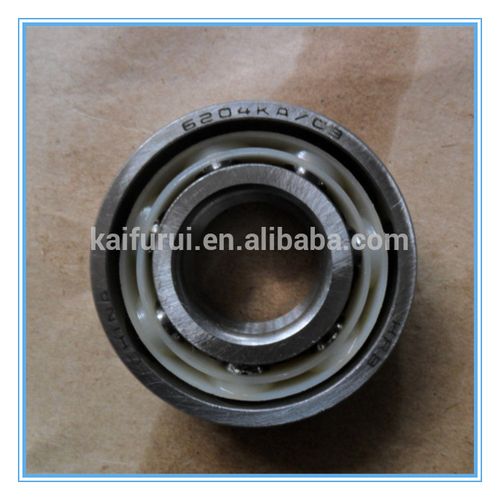Ultimate Guide to 6 Major Types of Bearings and Their Industrial Uses
Bearings are critical components in machinery, reducing friction between moving parts while supporting axial and radial loads. This guide explores various bearing types and their specific industrial applications to help engineers and purchasers make informed decisions.
1、ball bearing applications2、roller bearing types
3、thrust bearing uses
4、plain bearing materials
5、ceramic bearing advantages
6、bearing selection guide
1、ball bearing applications

Ball bearings dominate high-speed applications due to their low friction design. Widely used in electric motors and automotive components, these bearings handle both radial and axial loads through precisely crafted steel balls. Their sealed variants protect against contamination in food processing equipment, while open designs allow easy lubrication in industrial gearboxes. Modern applications include robotics joints and aerospace actuators where precision and reliability are paramount. The standard ABEC rating system helps users select appropriate tolerance levels for specific operational requirements.
2、roller bearing types
Cylindrical roller bearings excel in heavy radial load scenarios found in mining equipment and wind turbines. Tapered roller versions are essential for vehicle wheel hubs, managing combined loads through angled raceways. Spherical roller bearings compensate for shaft misalignment in paper manufacturing machinery, while needle roller variants save space in transmission systems. Recent developments include hybrid roller bearings combining steel races with polymer rollers for corrosive chemical processing environments.
3、thrust bearing uses
Thrust bearings specialize in managing axial loads in vertical applications. Hydrodynamic thrust bearings support ship propeller shafts, utilizing fluid pressure films. Automotive clutch assemblies employ ball thrust bearings for smooth engagement. Turntable bearings in construction cranes use crossed roller designs for 360-degree rotation under extreme weights. Emerging applications include vertical axis wind turbines where they handle massive axial forces during operation.
4、plain bearing materials
Plain bearings utilize diverse materials for specific operating conditions. Babbitt metal-lined bearings withstand high-impact loads in marine engines, while bronze bushings serve in low-speed hydraulic systems. Polymer-based bearings operate without lubrication in food conveyors, and carbon-graphite variants handle extreme temperatures in furnace components. Advanced metal matrix composites now enable self-lubricating bearings for satellite mechanisms and vacuum environments.
5、ceramic bearing advantages
Ceramic bearings offer superior performance in extreme conditions. Silicon nitride balls in hybrid bearings reduce electrical arcing in electric vehicle motors. Full-ceramic bearings withstand acidic environments in chemical pumps and high-temperature kilns. Their non-magnetic properties benefit MRI machines, while lightweight characteristics improve high-speed performance in dental drills. Recent developments include graphene-coated ceramic bearings for space exploration equipment.
6、bearing selection guide
Selecting bearings requires analyzing load types, speeds, and environmental factors. Radial ball bearings suit moderate loads at high RPMs, while tapered rollers handle combined stresses. Consider lubrication needs – sealed bearings for maintenance-free operation versus open designs for customized greasing. Evaluate temperature ranges: ceramic for extreme heat, polymer for chemical resistance. Always cross-reference manufacturer load ratings with actual application requirements for optimal service life.
Understanding bearing types transforms equipment design and maintenance practices. From high-speed robotics needing precision ball bearings to mining equipment requiring rugged roller types, each variant solves specific engineering challenges. Material innovations continue expanding bearing capabilities into new industrial frontiers. This guide equips professionals to match bearing characteristics with operational demands, ensuring machinery efficiency and longevity across industries.
This comprehensive analysis covers critical bearing variations from traditional designs to cutting-edge solutions. Whether optimizing existing systems or designing new equipment, proper bearing selection directly impacts performance metrics. Implement these insights to reduce downtime, improve energy efficiency, and extend machinery lifespan across automotive, aerospace, and industrial applications.




 13869596835
13869596835